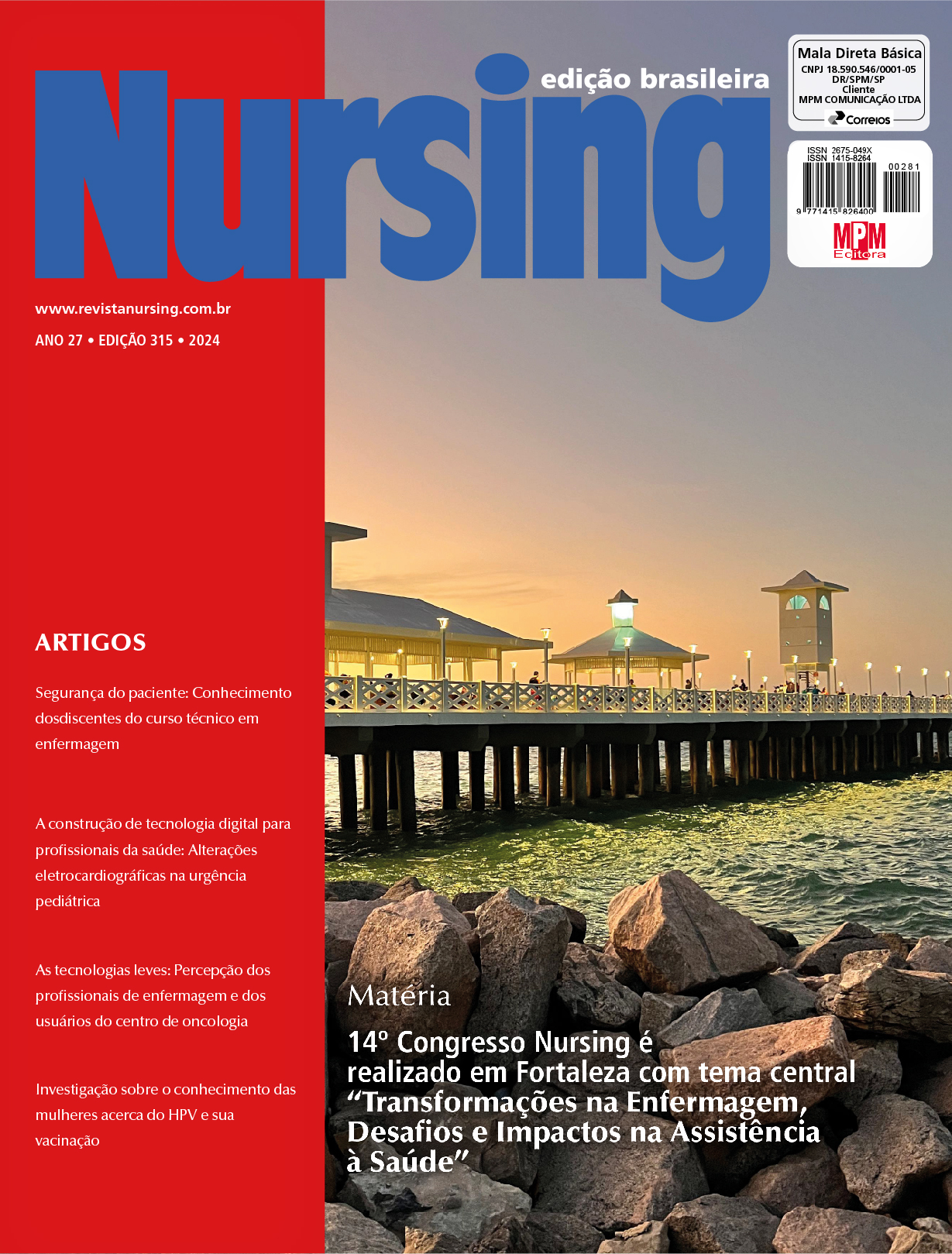PATIENT SAFETY: KNOWLEDGE OF NURSING TECHNICAL COURSE STUDENTS
DOI:
https://doi.org/10.36489/nursing.2024v28i315p9416-9419Keywords:
Patient safety, Health education, Quality of health careAbstract
Objective: To identify nursing technician course students’ understanding of human error and patient safety. Method: Quantitative, exploratory and descriptive research, carried out between April and May 2023, using an online questionnaire. Results: 312 students from an educational institution in São Paulo participated. Among the conceptual aspects, 95.5% of students agreed that working more carefully is an effective strategy for preventing future errors; In relation to attitudinal aspects, 66.8% of participants agreed that they work in institutions that promote good practices to promote patient safety. Conclusion: It was possible to identify the presence of gaps in students' knowledge between the conceptual and attitudinal aspects assessed by the questionnaire. Therefore, a more emphatic approach to patient safety is suggested during the training of these future professionals.
References
WHO. Global Patient Safety Action Plan 2021–2030. Geneva: World Health Organization; 2021.
Brasil. Ministério da Saúde. Documento de referência para o Programa Nacional de Segurança do Paciente / Ministério da Saúde; Fundação Oswaldo Cruz; Agência Nacional de Vigilância Sanitária. – Brasília : Ministério da Saúde, 2014. 40 p. : il. Disponível em: <https://bvsms.saude.gov.br/bvs/publicacoes/documento_referencia_programa_nacional_seguranca.pdf>.
Silva MF et al. Cultura de segurança do paciente na perspectiva de técnicos de enfermagem de um setor de emergência. Rev. Rene, Fortaleza, v. 22, e60734, 2021. Epub 02-Abr-2021. DOI: <http://dx.doi.org/10.15253/2175-6783.20212260734>. Disponível em: <http://www.revenf.bvs.br/scielo.php?script= sci_arttext & pid=S1517-38522021000100312 & lng= pt nrm=iso>.
Rodrigues C et al. Segurança do paciente: percepções de docentes e discentes do curso técnico em enfermagem. New Trends Qual Res. 2020; 3:116-27.DOI: https://doi.org/10.36367/ntqr.3.2020.116-127>. Disponível em: <https://publi.ludomedia.org/index.php/ntqr/article/view/151/149>.
Yoshikawa JM, Sousa BEC, Peterlini MAS, Kusahara DM, Pedreira MLG, Avelar AFM. Comprehension of undergraduate students in nursing and medicine on patient safety. Acta paul. enferm. 2013; 26(1):21-9. Disponível em: <https://doi.org/10.1590/S0103-21002013000100005>.
COFEN. Conselho Federal de Enfermagem. Obstáculos relacionados ao gênero enfraquecem o trabalho de enfermeiras. [recurso online]. Brasil, 2019. Disponível em: < https://www.cofen.gov.br/obstaculos-relacionados-ao-genero-fortalecem-potencial-de-enfermeiras-diz-pesquisa/c>.
Romero MP et al. A segurança do paciente, qualidade do atendimento e ética dos sistemas de saúde. Revista Bioética [online]. 2018, v. 26, n. 3], pp. 333-342. ISSN 1983-8034. DOI: <https://doi.org/10.1590/1983-80422018263252>. Disponível em: https://doi.org/10.1590/1983-80422018263252
Tartaglia A, Matos MAA. Second victim: after all, what is this? einstein (São Paulo), v. 18, p. eED5619, 2020. DOI: https://doi.org/10.31744/einstein_journal/2020ED5619. Disponível em: <https://www.scielo.br/j/eins/a/5RYNJ7cd7hsRSZhvcxgLzMk/?lang=pt#ModalHowcite>.
Simão ALS, Alencar GM, Garzin ACA. Segurança do paciente na prática simulada durante a graduação na área da saúde. Revista Nursing. v. 25 n. 284 (2022);25(284):6937-52. DOI: https://doi.org/10.36489/nursing.2022v25i284p6937-6952. Disponível em: https://www.revistanursing.com.br/index.php/revistanursing/article/view/2144








